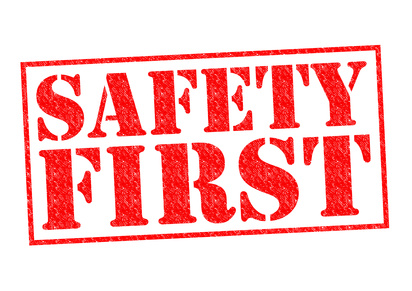Tough Climbing- Safety Briefing

The most important thing is that you and your fellow climbers stay safe whilst on your climbing trip!
Whilst climbing in the Tough ZOne can present dangers, with the proper training and proper equipment these can be kept to an absolute minimum. You should consider all of these safety rules before hitting the rock.
GET PROPER TRAINING
- Take your time to learn the basics from experienced and expert trainers and climbers
- Don't attempt any climbing technique or use any piece of equipment until you have properly learnt about it
- Always practice a new skill in a safe training environment before putting them to use on a real climb
- If you are ever in any doubt about anything, its ok to ask someone!
You can only learn how to climb safely from expert trainers
CHECK THE AREA
- Rock climbing is done on natural formations, even regularly used routes can change over time, look for indications of rock movement/falls
- Look for signs of wild animals that could pose a danger whilst climbing; such as nesting birds
- Take time to look for other climbers in the area, chat to them if possible and let them know where you are going, and find out where they are climbing
When you arrive at the start of your climb look around for hazards
PAY ATTENTION TO YOUR BODY
- Aches and pains are there to tell you that something is wrong, don't ignore them
- Treat cuts and grazes and soon as it is safe to do so
- Take regular breaks whenever possible and safe to do so, even if it's just dangling on a rope for a few moments to give your arms a rest
- Get plenty of sleep before a big climb so you are mentally alert
- Stay hydrated, drink clear fluids before, during and after you climb
- Never climb under the influance or alcohol or other substances
Climbing can take its toll on your body
EQUIPMENT
- Clear and store your equipment correctly, according to manufacturers instructions
Your climbing gear will only keep you safe if it is well looked after
- Check every piece of equipment before and after every climb- if in any doubt do not use it!
- Retire equipment that has passed its length of service or is damaged in any way
- Never reuse equipment that has taken a heavy fall, even if it appears to be fine
- Only use equipment you are trained to use
- Never use equipment in any way other than what it was designed for
Professional Training: Nothing can compare to professional training delivered by qualified trainers who can carefully guide you through how to safely learn and practice the required techniques in a controlled environment.
Medical Advice: Before taking part in a new sport or activity you should consult your doctor or other healthcare worker to identify any potential risks to your wellbeing. This is particularly important if you are pregnant, elderly, suffered previous injuries, suffering from a long term medical condition, or disabled. Whilst these conditions do not preclude you from taking part in most activities, getting advise can help you adapt to suit your individual needs.

